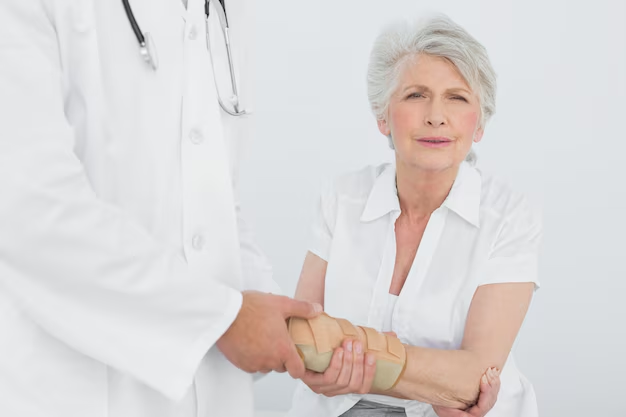Discovering Osteoporosis: Recognizing Signs and Taking Action
As we age, our bodies naturally begin to change, sometimes in ways that aren’t immediately obvious. One such condition that could silently develop is osteoporosis, a disease that thins and weakens bones, making them fragile and prone to fractures. How can you tell if you have this condition, especially since it's often termed a "silent disease"? Before diving into the financial aspects of health solutions, let’s explore essential clues that can help you recognize osteoporosis.
Common Indicators of Osteoporosis
Bone Density Scans (DEXA): The most definitive way to diagnose osteoporosis is through a bone density test, typically a dual-energy X-ray absorptiometry (DEXA) scan. This non-invasive test measures bone mineral density and helps determine the onset and severity of osteoporosis.
Fractures from Minor Incidents: Experiencing a fracture from a low-impact activity, such as a minor fall, might signal weakened bones. Common sites include the hip, spine, or wrist.
Height Loss and Posture Changes: A noticeable reduction in height over time, or a stooped posture, may indicate vertebral compression fractures linked to osteoporosis.
Back Pain: Sudden and severe back pain can arise from compression fractures in the spine, which are common in osteoporotic individuals.
Family History: Genetics play a role in bone health. If your parents had osteoporosis or experienced fractures, consider discussing proactive measures with your healthcare provider.
Steps to Confirm and Manage Osteoporosis
If any of the above signals sound familiar, it's crucial to consult with a healthcare professional. Early diagnosis and management can mitigate the risks of osteoporosis-related complications. Here’s how to begin:
Schedule a Consultation: Talk with your doctor about symptoms and request a bone density test if necessary.
Adopt Bone-Healthy Habits: Increase your calcium and vitamin D intake, engage in weight-bearing exercises, and quit smoking to improve bone health.
Medication Regimens: If diagnosed, medications such as bisphosphonates might be prescribed to prevent further bone loss.
While these steps are crucial, navigating the medical world can be costly. This is where financial strategies and support systems come into play.
Navigating Financial Support for Osteoporosis Management
Managing osteoporosis might require regular check-ups, medication, and possibly rehabilitation. Unfortunately, healthcare expenses can stack up quickly. Here’s how you can ease the financial burden:
Medicare and Medicaid: They often cover bone density tests and approved medications for eligible individuals.
State Assistance Programs: Many states offer programs that cover part of the costs associated with osteoporosis testing and management.
Nonprofit Organizations: Organizations like the National Osteoporosis Foundation offer guidance and may provide financial aid or resources.
Pharmaceutical Programs: Drug manufacturers sometimes offer discounted or free medication to those who qualify, reducing overall treatment expenses.
Tax Deductions: Medical expenses over a certain percentage of your income can be deducted from your taxes, potentially offsetting costs.
Being proactive about a diagnosis is just one part of the equation. Achieving financial stability in the wake of healthcare costs is pivotal. For those looking to further ease financial pressures, here’s a curated list of potential resources.
Financial Assistance Resources
🏦 Government Health Programs
- Explore Medicare and Medicaid options. These programs can significantly reduce out-of-pocket costs for osteoporosis care.
📈 Debt Relief Services
- Consider seeking help from debt advisors to restructure existing debt and create more room for medical expenses.
💊 Medication Assistance Programs
- Check with pharmaceutical companies for patient assistance programs that offer discounts on osteoporosis medication.
🏢 Nonprofit Organizations
- Reach out to nonprofits focused on bone health for possible grants and financial aid.
📚 Educational Grants for Healthcare Training
- If you or a family caregiver is training to better manage osteoporosis care, look for educational grants to fund this learning.
Facing osteoporosis calls for a strategic approach to both health and finances. With the right resources and early detection, you can manage your bone health and financial future effectively.

Related Topics
- a Nurse Is Caring For a Client Who Has Osteoporosis.
- a Percutaneous Is Performed To Treat Osteoporosis Related Compression Fractures
- Can Alcohol Cause Osteoporosis
- Can I Do Pilates If I Have Osteoporosis
- Can I Reverse Osteoporosis
- Can Men Get Osteoporosis
- Can Osteoporosis Affect Teeth
- Can Osteoporosis Be Cured
- Can Osteoporosis Be Painful
- Can Osteoporosis Be Reversed